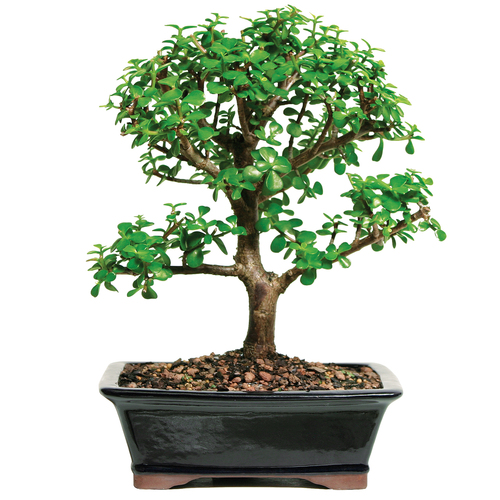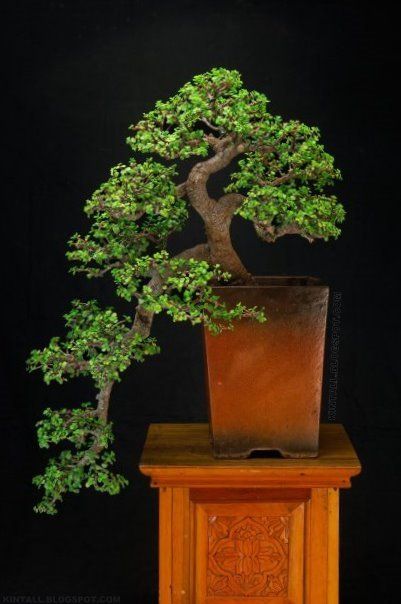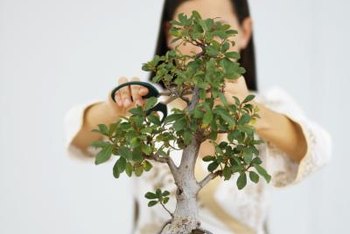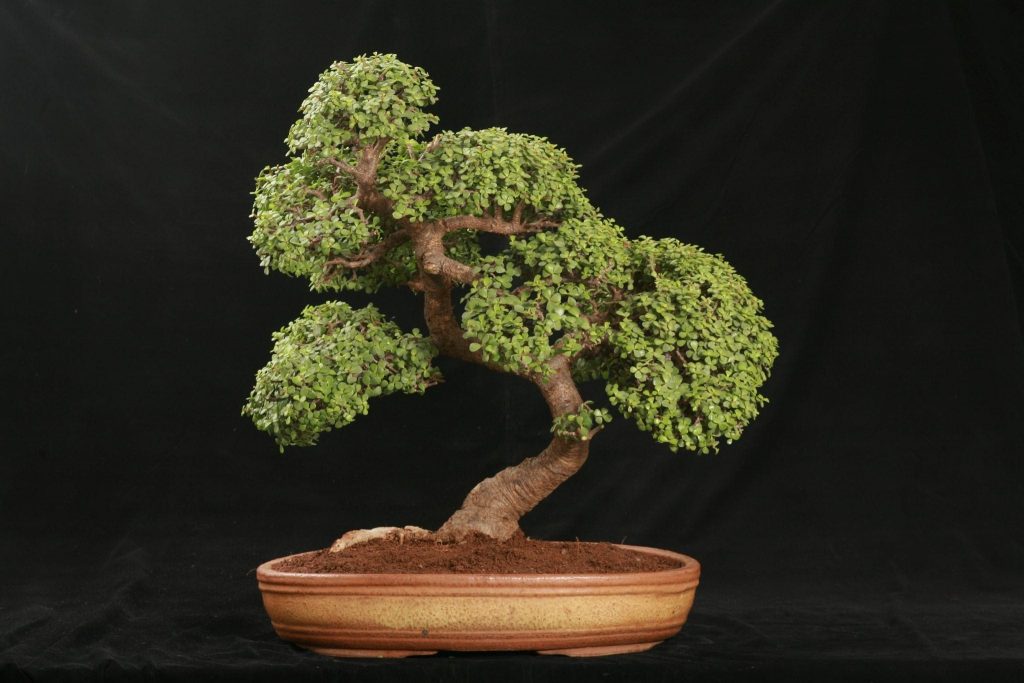Jade Bonsai Care Guide [2021]
Jade bonsai trees are a beautiful addition to any home that can be appreciated year-round. They have lush green foliage, and the perfect amount of flowers in summertime!
Not only do they look good, but jade bonsai trees also provide great air quality for your home. They filter out harmful toxins like formaldehyde from furniture and carpeting.
Jade bonsai trees can grow up to 15 feet tall with a spread of about 4 feet wide so you will want to find an appropriate spot for it before planting it.
Are Jade bonsai trees lucky?
Jade bonsai is considered to be good luck in the Chinese community.
It is said that if you place a jade bonsai tree outside of your front door, it will make sure that the bad energy never enters your home. Only good fortune will enter.
Jade bonsai trees are also known for their longevity, which symbolizes the longevity of a marriage.
The jade bonsai tree should be planted in the spring to ensure that it grows well enough to survive throughout its lifetime.
Jade bonsai styles

Do you want to grow a bonsai that is not like anything else? Jade plants are perfect for this because they can be shaped into almost any form. Some of the more popular shapes include:
Aerials
This style has an upward curve and a long, thin trunk. The branches on this type of tree are close together in the top half of the tree and farther apart near the bottom where it curves up again.
Cascade

This style features green leaves and a wide base with many cascading branches that hang down at different lengths. They also have downward facing trunks.
These trees often have roots growing out from their bases or from below them which gives them their unique look.
Mountain
This style is a variation of the cascade style with a less dense appearance. The branches are more spread out and they are growing out horizontally from the trunk instead of down near its base.
Broom

This style has long, thin trunks that form an almost circular shape called a broom.
Heel over
This style is most commonly used with jade bonsai trees because it keeps the tree short and small while giving it a very elegant appearance.
The trunk of this plant grows in a curved fashion (similar to the aerial) but it also grows the branches in a horizontal direction which gives it its unique look.
Bare root bonsai jade plant
The bonsai Jade has many varieties, but two of the most popular are the colorata and dewdrop.
The colorata is bright green with yellow or white spots all over its leaves. It also has yellow flowers in the spring and early summer, as well as small red berries when it is mature.
The dewdrop variety is also very colorful, with leaves that turn from dark green to a bright green at the ends of each leaf.
These bonsai will grow best if they are potted in sphagnum moss because this will keep the roots very moist and will absorb any fertilizer that is applied.
If you don’t have this type of plant at home, it can easily be bought in most nurseries or garden centers.
Jade bonsai care
Growth in a container is very slow, and the bonsai can take up to 10 years to produce flowers or fruit.
However, this type of plant requires little care beyond watering it every day and fertilizing it on occasion throughout the year.
You also need to make sure that you have a well draining soil so that it doesn’t become water logged, which can kill it.
Transplanting
When you transplant your bonsai, it is best to do this when the plant is not in a growing season (usually March and April).
Make sure that there are no leaves on the top of the plant because they will fall off if you move it when it is flowering or in the fall.
Water it well before you move the plant, and then gently pull it out of its pot with your fingers.
Start by pulling the roots slightly to loosen them, but don’t pull them all out in one go because this could cause damage to the root system.
After you have moved it to its new spot, water your plant again, then pull out the rest of its old roots by hand.
It should take you about 15 minutes to do this so it is good if you can find someone to help you with it.
After transplanting your jade plant will take a few weeks before it begins growing new leaves.
If some of the leaves fall off after transplanting, don’t worry because this is completely normal.
Potting a Jade bonsai and Jade bonsai soil
A jade bonsai needs to be repotted every year when the weather starts to cool down.
You should use a good quality potting mix. The container should not be more than one inch greater in diameter than the root ball.
The potting mix should be high quality and well-draining. This will prevent any of the roots from rotting or drying out.
You can also add charcoal to keep the soil fresh and improve its drainage.
Jade bonsai pruning

It is important to prune the roots of your bonsai jade plant every year after its first year.
This can be done in early summer when you are repotting it. This will allow plenty of time for new growth to grow and replace any roots that you have trimmed.
It is also important to prune the main branches of your plant so that they maintain their shape.
If left unpruned, these branches can become too long and break off when it rains or in high winds.
You can trim them back while they are fully dry but make sure to soak the roots first to help them recover more efficiently.
A Jade bonsai should be trimmed back by about a third every year just after the leaves begin to drop and before new growth appears.
If you trim it at this time, it will allow the plant to produce stronger growth throughout this period which helps protect against cold weather or drought conditions that could damage the plant.
Why is my jade plant dropping leaves?
Your jade bonsai losing leaves may occur if it is being exposed to direct sunlight, or if you have recently repotted it and the roots were disturbed during this process.
It may also drops some leaves if you move it outside for a little while or bring it inside after winter has ended.
This happens because the plant automatically protects itself from damage caused by transplanting, which means that it drops these leaves to protect itself.
If the leaves start falling off regularly after repotting the plant or if they are turning yellow while still on the plant, this is a sign of overwatering.
Make sure you only water your plant when the top layer of soil has dried out completely and don’t allow it to sit in a saucer of water for extended periods of time.
This is especially important during the winter when it will dry out much more quickly than normal. You could also add some grit to your soil mix if you are worried about overwatering.
Jade bonsai tree for sale
We are sourcing a reputable supplier for you – back soon.
Conclusion
We know that jade bonsai is a sensitive plant and requires special care. That’s why we want to share some tips with you on how to keep your plants healthy, so they can thrive for years to come!
Here are our top five dos and don’ts of caring for jade bonsais.
- Do not ever expose them directly to sunlight because it will burn the leaves. Instead, grow them in partial shade or indoors near a window where there is filtered light.
- Don’t forget about watering either–they need water every day during springtime. But less often after summer (water once per week).
- You should also be sure their soil drains well. Add gravel at the bottom of their pot before adding the soil.
- As for fertilizing, we recommend using a mild liquid fertilizer every other month. Just follow the instructions on the packaging and you’ll be all set!
- Finally, if your plant’s leaves start turning yellow or falling off, chances are its roots need more water. However, only water when the top layer of soil has dried out fully. Happy growing!
If you haven’t registered for our free BONSA programme, grab your spot now. You’ll love it!

